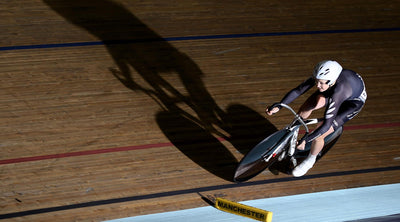
Resolutions: A Strong Foundation - Prologue
At Velocio, we often say, “let’s look at this differently”. In approaching 2018, we’re asking ourselves the same question as it relates to riding and fitness. How do we become stronger, smarter, and more efficient as a cyclist? We knew we’d be able to glean some valuable insights from a talented Kiwi and friend of Velocio, Joanne or “Jo” Kiesanowski. We’re big fans—and how can you not be? Jo is as humble as they come despite a boast worthy career of 3 Olympic Games and 16 years racing professionally within cycling. That’s a long and decorated career for any bike racer.
In this two part series we’ll delve into Jo’s background and learn more about becoming a well rounded and balanced athlete as Jo explains some of her favorite strength exercises that she credits in helping her maintain a strong foundation, versatility within disciplines and healthy throughout a sport that is often wrought with injury.

"When I was young, I was a skinny little girl. But I would watch female bike racers on the track; there was a French superstar Felicia Ballenger, and an Aussie sprinter Michelle Ferris that would constantly go head to head. They were big, burly, sprinter girls and I was in awe of their strength. I decided I wanted to be like them. Back then the thought was that if you were going to be a sprinter, then you needed to be bigger to be stronger.
Here I am this tiny little 16 year old girl, but I had decided I was going to get strong. I had taken an interest in racing on the track and it became apparent right away that I had some impressive power and natural speed. The gym became a part of my cycling regimen at a very young age and I progressed in cycling and sought to build a strong foundation. I was still a small sprinter though.

At 20 years old, I had some World Cups under my belt and left Christchurch, NZ to head to the US to grow in my cycling career. I began testing my talents in the endurance events on the track and soon found I was even better suited to a longer race. Two years later, in 2001, I signed my first pro contract on the road as primarily a criterium and road racer."
It became apparent that Jo’s talents on the bike were extremely versatile. Her sprint ability, strength and speed were her weapons and then she discovered she was able to add endurance into her arsenal. This allowed her to be competitive racing in the Commonwealth Games on both the track and road, and then the Olympic Games in 2004 and 2008 on the road. After Beijing in 2008, it was announced that the Omnium would be included as an event on the track for the first time at the London Olympics. As one of Jo’s strongest events, she was more motivated than ever to switch disciplines and make it to London (on the track) for her last Olympics.

The omnium is akin to the Heptathlon for cycling—back then it was 6 events over 2 days of competition with a mixture of sprint, endurance, individual timed events and mass start races.

"The road race terrain in Beijing was mountainous and so I had worked to be as lean as possible. As soon as the Games were over and we found out the Omnium would be a goal for London, I needed to immediately shift my training and put a dedicated and more focused emphasis on strength for London. This effort paid off and I was able to qualify for my third Olympic Games.
I credit a consistent base of strength work to my longevity and versatility as a cyclist. I retired in 2016 from professional racing but fitness remains a large component of my life. I like no longer having the pressure of riding my bike everyday, but now it’s the enjoyment of the times that I get to. I get to meet friends and clients for coffee rides, help grow the women’s cycling community in Seattle, mentor a local cycling team and enjoy my local gym community."

Longevity and Versatility (and maybe even some of Jo’s humility). That’s something we all should strive for.
Read more about building a strong foundation in Part I and Part II of this series.


